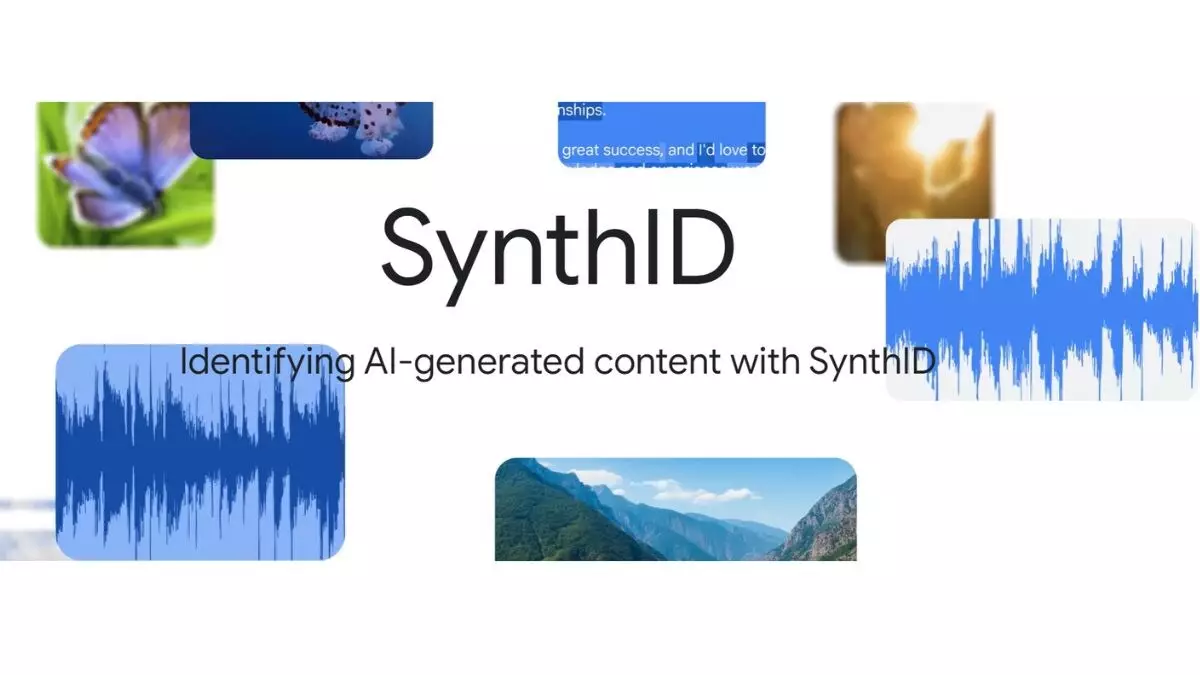In an era where artificial intelligence (AI) is burgeoning and permeating various facets of life, the need for transparency and authenticity has become increasingly critical. On a notable Wednesday, Google DeepMind unveiled SynthID, a groundbreaking tool that serves to watermark AI-generated text. Initially focused on text, this innovative technology aims to provide a robust mechanism for detecting AI-generated content, thereby enabling businesses and developers to maintain integrity in their communications and information dissemination.
Though currently limited to text, SynthID is designed to be versatile, with aspirations to watermark images, videos, and audio in the future. By offering only the text watermarking tool for now, Google is setting the stage for a broader suite of options. The availability of SynthID through the Responsible Generative AI Toolkit and platforms such as Hugging Face marks a strategic approach to increasing accessibility. This step is pivotal as it brings the technology into the hands of developers and businesses striving to protect their digital environments against misinformation.
AI-generated text has infiltrated the internet at an astonishing pace, often inundating platforms with content that can be difficult to discern from human-generated writing. A report from Amazon Web Services AI lab highlighted that over 57% of sentences on the web translated into multiple languages are potentially AI-generated. While some might dismiss this proliferation as harmless, it poses severe risks. The capability of AI to generate misleading or false narratives can have tangible consequences, particularly in sensitive contexts like elections or public discourse. In such scenarios, the societal impact cannot be overstated; the line between fact and fiction risks becoming alarmingly blurred.
What sets SynthID apart in the crowded field of AI detection tools is its distinct method of watermarking. Unlike traditional approaches that strive to embed visible markers, SynthID employs machine-learning algorithms to identify and modify specific words within the text. By predicting which words are likely to follow in a given sentence, it seamlessly integrates a watermark throughout the document. This innovative technique can profoundly enhance content verification processes, offering a unique solution to a complex problem.
For instance, in a sentence like “John was feeling extremely tired after working the entire day,” SynthID’s algorithms can replace “tired” with a synonym that aligns with its database. The result is a piece of text that retains the essence of the original but contains invisible markers confirming its AI generation. This method serves both as a deterrent to misuse and as a tool for diagnosis, allowing users to distinguish between human and AI material effectively.
While the potential of SynthID is substantial, its rollout is not without challenges. The intricacies of watermarking audio and visual formats introduce complexities that have yet to be resolved for external use. Currently, Google’s approach for images involves embedding watermarks within pixels, while for audio, watermarks are applied during a visual conversion of sound waves. These methods remain proprietary to Google’s systems, raising questions about transparent accessibility for third-party usage.
The reliance on Google for these capabilities limits broader integration into diverse platforms, potentially stifling innovation among competitors. As AI evolves, the expectation for diverse developers to explore and enhance watermarking technologies may not be met if such solutions remain tightly controlled.
As society increasingly engages with AI technologies, tools like SynthID become essential in navigating the landscape of misinformation. By fostering the ability to detect and authenticate AI-generated content, Google DeepMind not only champions transparency but also serves as a bulwark against the damaging effects of digital deception. Future advancements in AI watermarking may well redefine the way we consume information, making it imperative for developers and businesses to leverage such innovations to safeguard their digital identities. The journey towards a more authentic digital marketplace is fraught with challenges, but with initiatives like SynthID, the horizon appears promising.


Leave a Reply